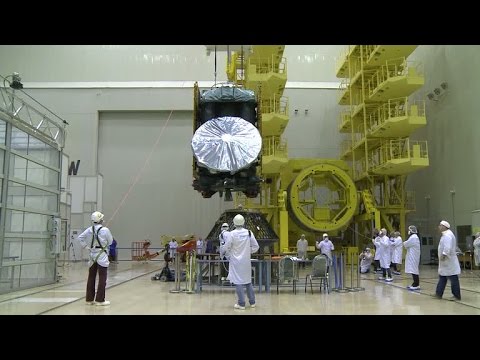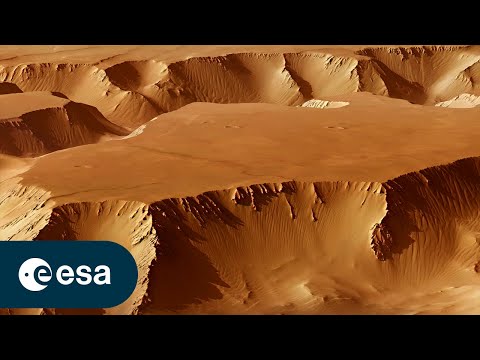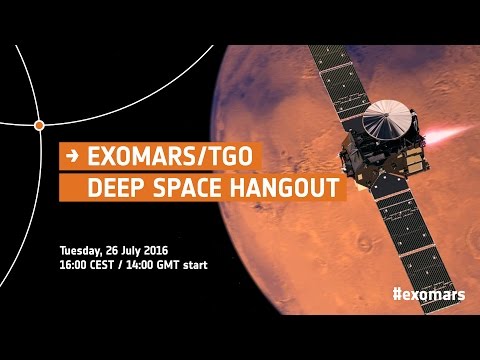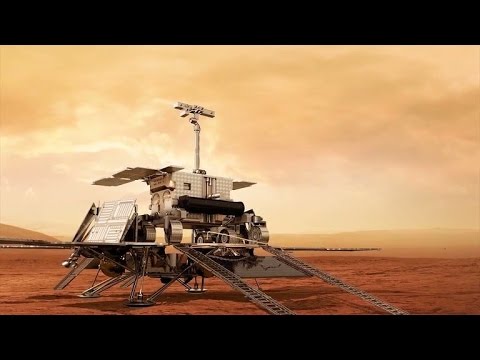ExoMars science
On 14 March at 09:31 GMT ExoMars 2016 will be launched from Baikonur onboard a Proton rocket.
The joint European and Russian ExoMars mission will test key exploration technologies and search for evidence of methane and other rare gases in the Martian atmosphere. These gases could result from geological processes or they could be signatures of current biological activity on the planet.
This film examines the two European science instruments on the ExoMars Trace Gas Orbiter (TGO) – CaSSIS and NOMAD. The high-resolution CaSSIS (Colour and Stereo Surface Imaging System) acts as the orbiter’s scientific eye. It is a telescope with a sophisticated detector that can provide colour and stereo images over a nine and a half kilometre wide strip. CaSSIS will examine recurring slope linea – dark lines on the surface of Mars at different times of the day over the planet’s seasons. These linea are believed to be associated with liquid brine. They increase in size during the Martian spring and summer and fade away during autumn and winter.
NOMAD (Nadir and Occultation for MArs Discovery) will be the first high resolution instrument of its kind around the planet. It will observe information about Mars’ atmosphere by looking at the Sun during sunsets and sunrises. It contains three spectrometers – two working in the infrared and one in ultraviolet – and can identify trace gases in the atmosphere, such as methane. The presence of methane in Mars’ atmosphere could result from simple life forms like microbes.





Good luck for the launch!
It is actually not the first European rover, we had Beagle, which is still parking on the Red Planet.
itd be cool if exomars 2018's rover crossed paths with either NASA's opurtunity or curiosity and took photos of eachother – it probably wouldntbhappen as im sure esa wantbtheir rover to examine somewhere thats not been fully explored yet
Good luck with the launch! Exciting!
I am so very excited for this launch & all of the resulting measured data!!!





Great job Russia & the ESA. — collaborative effort to further our understanding of our very own Solar System!!!
ESA's CGI people are legit. Beautiful renders.